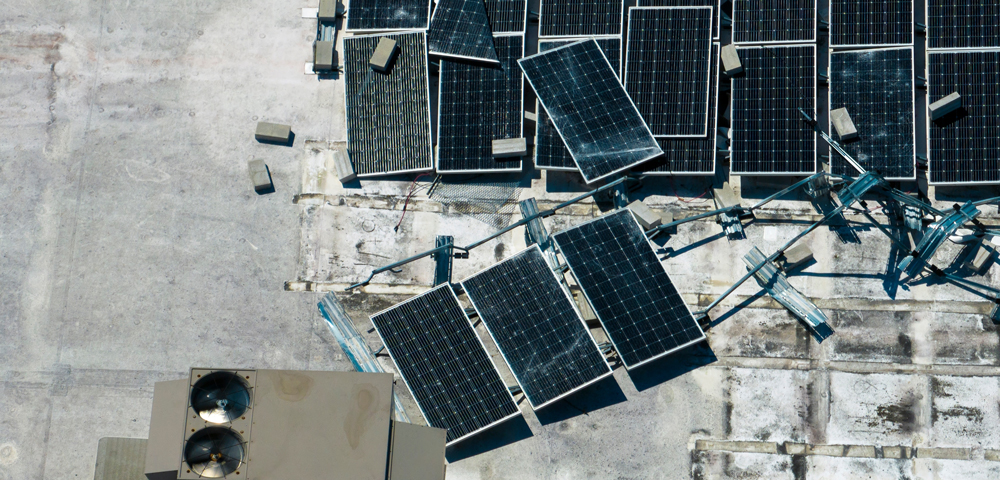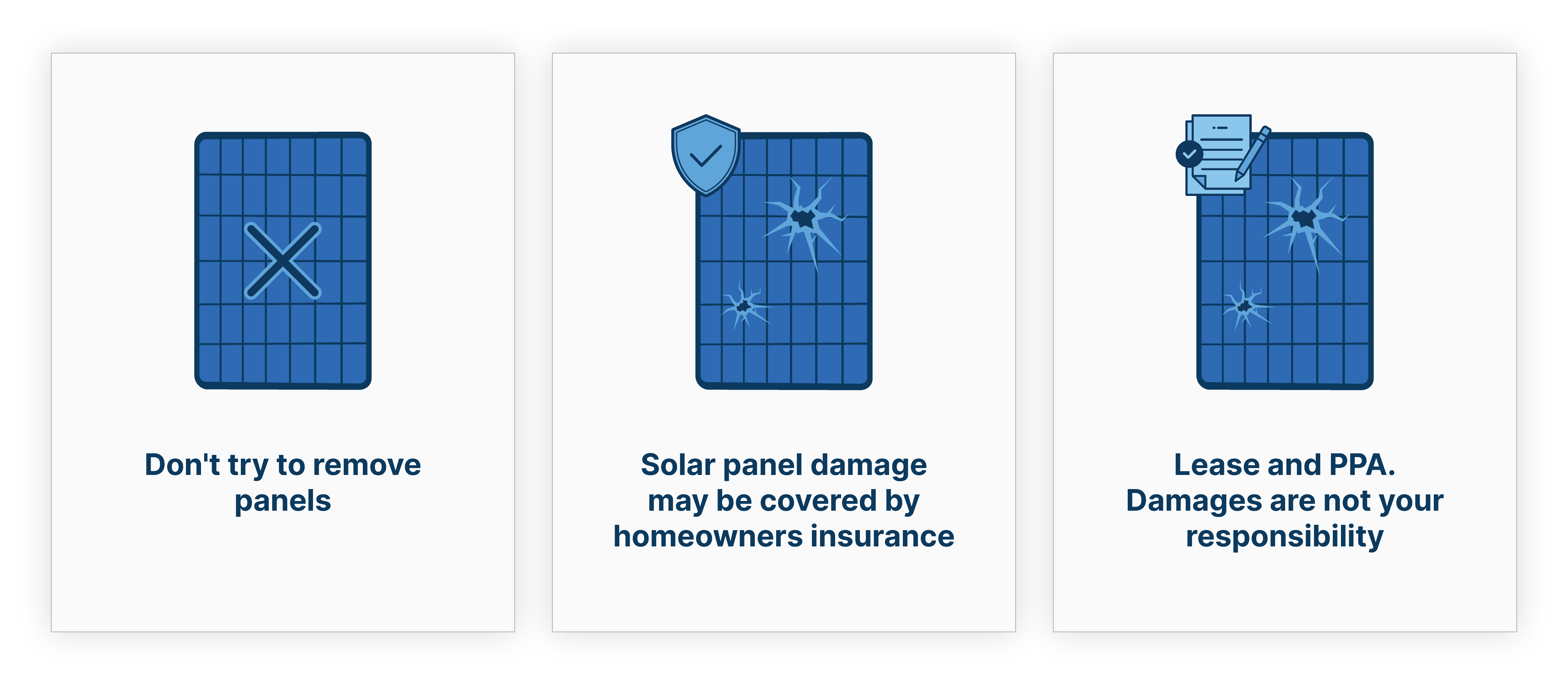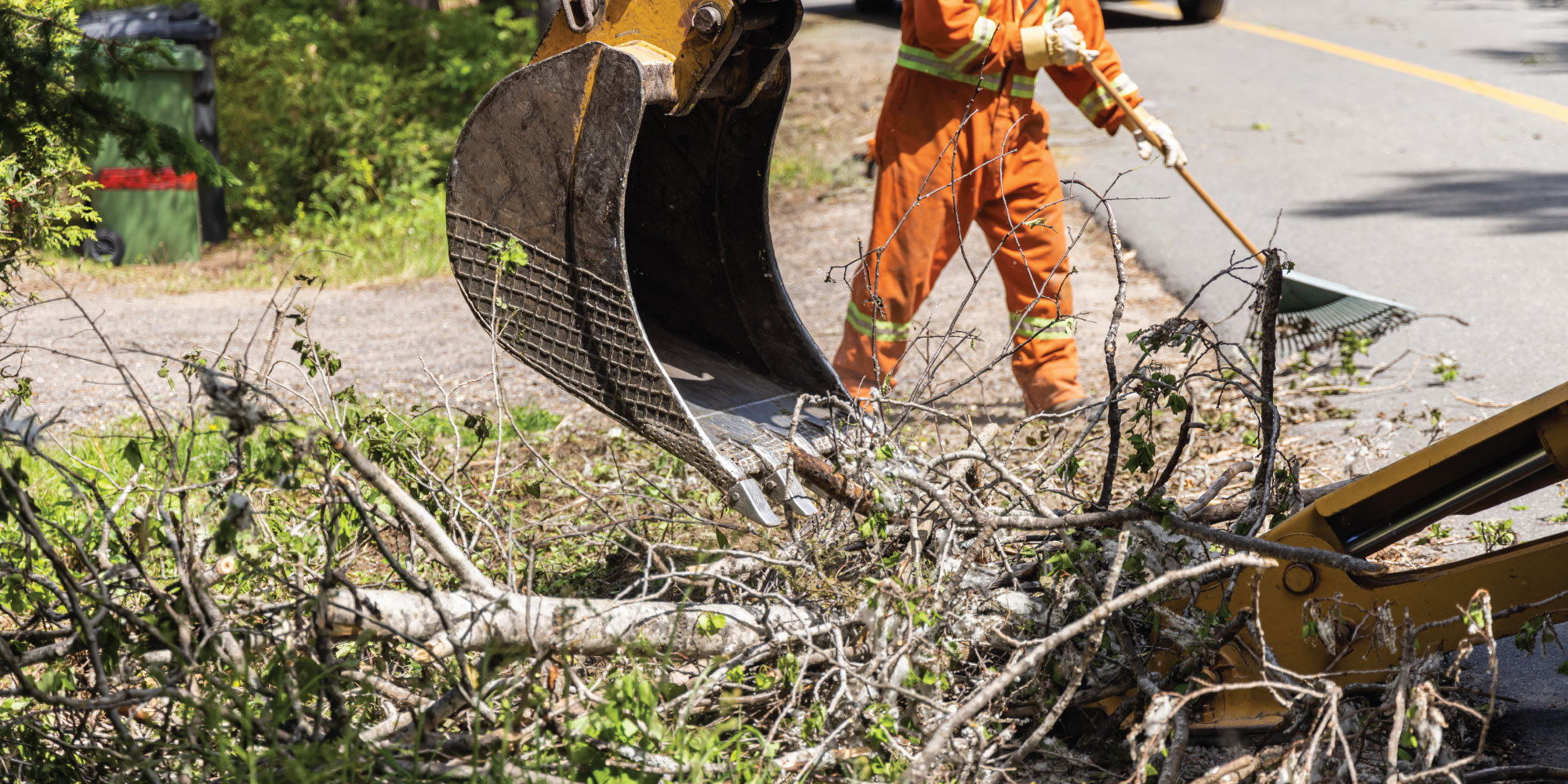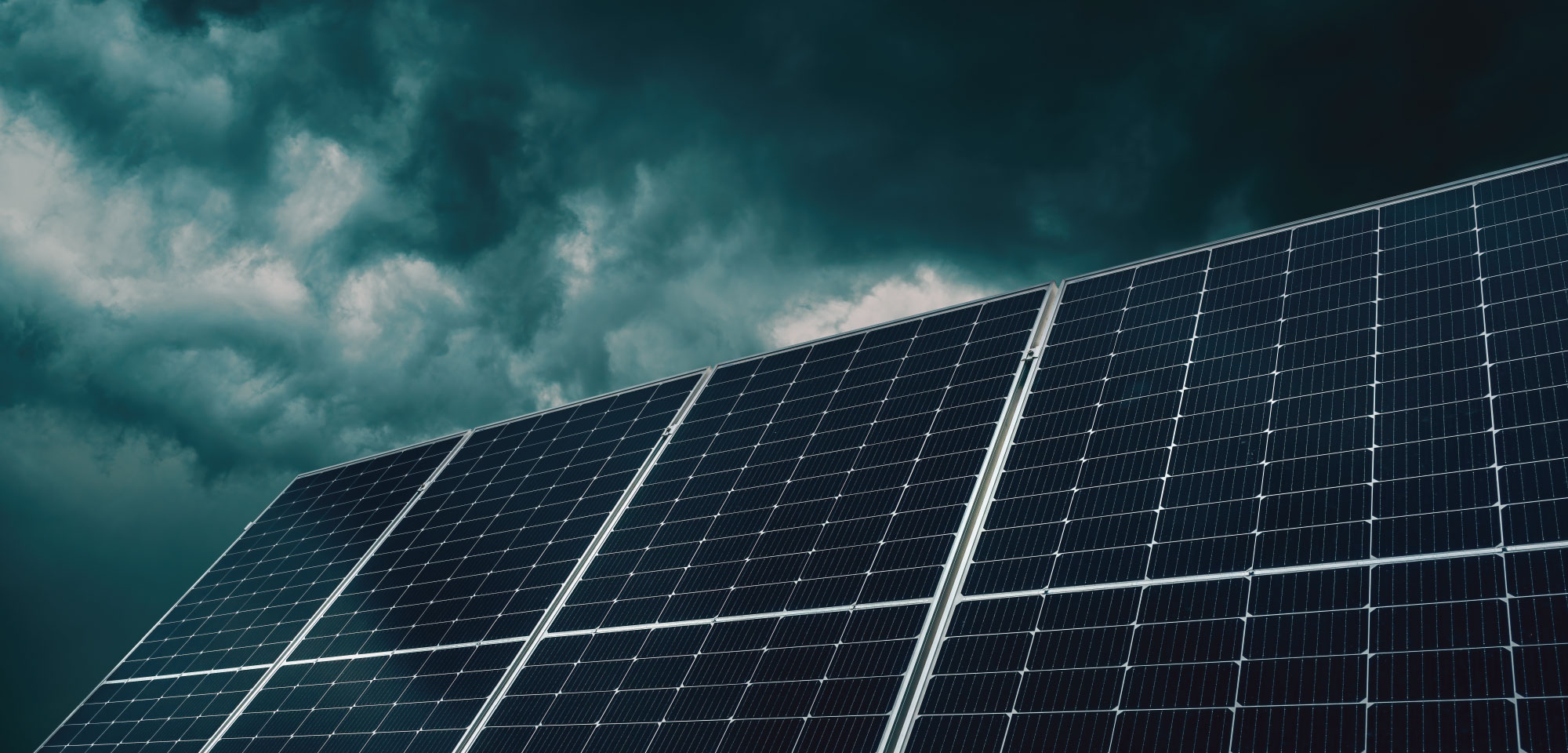Updated 2 months ago
What Happens to Solar Panels in a Hurricane?
Written by Ben Zientara Ben ZientaraBen Zientara is a writer, researcher, and solar policy analyst who has written about the residential solar industry, the electric grid, and state util...Learn more , Edited by Catherine Lane Catherine LaneCatherine has been researching and reporting on the solar industry for five years and is the Written Content Manager at SolarReviews. She leads a dyna...Learn more

Why you can trust SolarReviews
SolarReviews is the leading American website for solar panel reviews and solar panel installation companies. Our industry experts have a combined three decades of solar experience and maintain editorial independence for their reviews. No company can pay to alter the reviews or review scores shown on our site. Learn more about SolarReviews and how we make money.
If you live in a state that experiences a lot of hurricanes, like Florida, Texas, or North Carolina, you might be wondering whether solar panels can survive a big storm.
The answer is, solar panels tend to do very well in hurricanes, and any damage can usually be repaired quickly. Rooftop solar panels on homes do especially well.
We’ll break down everything you need to know about solar panels in hurricanes below, but for now, here’s the short version:
Key takeaways
Solar panels are built strong to withstand all kinds of weather conditions.
Brands that offer extra protection from high winds include Canadian Solar, REC, Mission Solar, and Maxeon.
In hurricane-prone areas, home solar arrays must meet requirements to survive at least 160-mph winds; solar installers use high-quality racking and roof attachments to meet these requirements.
If your solar panels are damaged by a storm, your homeowners’ insurance will likely cover the repairs; don’t go near them until an electrician checks them first.
If you want to keep the lights on if the grid goes down, you’ll need to add a battery backup system.
Can solar panels withstand a hurricane?
Yes, solar panels can withstand hurricanes. While there may be some unavoidable damage due to flying debris or extraordinarily high winds, solar panel systems are strong.
Solar panels are like any other product: the good ones are built to last, while the cheap ones can be pretty flimsy. Manufacturers know their solar panels will be outside in the elements, so they’re designed to hold up against them.
All Tier 1 solar panels are tested for how well they perform in high wind and heavy snow, and some are even tested for their impact resistance to things like hail.
Speaking of hail, a few years ago, solar panels at the National Renewable Energy Laboratory’s (NREL) testing facility were subjected to a wild hailstorm. Of the more than 3,000 panels located at the facility, only one was damaged, showcasing just how durable solar panels are.
Solar panels rated for high winds
The average solar panel is tested to withstand a wind uplift force of 2,400 pascals (about 50 lbs per square foot) and a snow load of 5,400 pascals (~113 lbs per square foot), but some of the best solar panels meet higher standards.
Here’s a quick look at some of the most weather-resistant solar panels:
Make and model | Snow load (lbs/ft²) | Wind load (lbs/ft²) | Hail resistance |
|---|---|---|---|
Canadian Solar TOPHiKu6 | 169 | 125 | 1.8 inches at 69 mph |
REC Alpha Pure RX | 167 | 125 | 1.4 inches at 51 mph |
Mission Solar PERC 108HC | 113 | 113 | 2.2 inches at 76 mph |
Maxeon 3 Series | 113 | 113 | 1.8 inches at 69 mph |
Municipalities require strong solar installations
Places that can experience extreme weather and wind events like Florida and Texas have done a pretty good job of passing rules to ensure solar systems can survive the worst.
Most places in Florida require solar installations to withstand winds of 160 mph minimum, and in a place like Houston, Texas, where Hurricane Harvey caused massive destruction, that number is 110 mph.
The solar industry also has a vested interest in ensuring installations are over-engineered enough that there aren’t widespread problems with panels tearing chunks of homeowners’ roofs off.
Roof-mounted solar systems are positioned within a few inches of the roof, and wind blowing between the panels and the roof can cause a huge amount of what engineers call “uplift.”
Those systems are designed to withstand huge amounts of uplift force, with huge lag bolts that are screwed directly into the roof beams and sealed with extra care. With 4-inch lag bolts set into your rafters and solidly-constructed solar racks, the panels on your roof can withstand huge uplift forces.
Solar in past storms
Perhaps the most convincing evidence of rooftop solar panels’ durability is the record of panel damages in past storms.
New Jersey, a very popular place for home solar power, sustained high winds and blowing debris during 2012's Superstorm Sandy. Luckily, solar owners faced very few problems.
The same was true of Hurricane Matthew in 2016, as well as Hurricane Maria, which devastated Puerto Rico in 2017. Time and time again, solar panels have weathered the storm as good or better than other structures.
In 2018, Hurricane Florence spilled coal ash and even left some North Carolina fossil-fuel plants shut down for weeks due to damage and flooding, yet solar panels owned by Duke Energy were back to generating power just one day after the storm.
But, that’s not to say that solar panels are never impacted by hurricanes and natural disasters. The image below shows damage to a commercial rooftop installation after 2022’s Hurricane Ian. This kind of damage would not be likely with a small residential system, but it is possible.

Surviving a hurricane with solar and batteries
In 2024, Hurricane Helene ripped through Florida and caused major flooding in North Carolina. At the height of the damage, nearly 4.7 million people had lost power, but many people with solar panels and backup batteries kept their lights on and appliances running.
One particular story shows how great a solar and battery storage system can be: a North Carolina couple kept their power running for 11 days with their 10-kilowatt solar system and 18.5 kilowatt-hour battery, providing hot showers and refrigerating food and medicine for their neighbors.
Solar and batteries aided in hurricane recovery efforts as well. Solar-based microgrids helped get people through the aftermath of Helene, running well pumps, powering essential appliances at fire stations and churches, and running satellite communications equipment throughout the region to ensure help got where it was needed.
So now that you know not to be afraid, what do you have to do to prepare?
What to know before the hurricane

Before a hurricane, you might be inclined to batten down the hatches and waterproof everything in sight. And if you’re a micro-grid operator in Haiti, you might even think about pulling all your panels from their racks and waiting to re-install until after the storm.
But for regular homeowners, there isn’t much to do. Like we said above, panels and racks are built strong, and the mounts should be watertight for decades - storms or not. Don’t try to remove the panels yourself, and don’t try to cover them with anything, either.
Solar panels will not cause your roof to fly off your house, unless the roof itself was already going to fly off, either because of insane winds or poor building techniques. Your best bet is to keep your flashlight handy and prepare for the storm as normal. If there’s damage, you’re more than likely covered.
If you're extra cautious, you can do some landscaping before the storm begins to minimize potential impacts of debris. Make sure hanging or overreaching branches are trimmed prior to the storm so they don't fall onto your panels from hurricane winds. It's good practice to make this part of your regular solar panel maintenance and upkeep schedule.
Note: Storm damage is the reason installers won’t do rooftop solar panels for mobile homes.
Tip: If you have a backup battery, make sure it is set to charge to 100% and stay there. All of the best home backup batteries have a feature that automatically responds to severe weather. It’s usually called Storm Guard or Weather Guard. If you have a portable solar generator, you should charge that as well to have a little more power stored up.
After the storm

If your solar panels are damaged in a hurricane (or any other way), don’t go anywhere near them or try to repair the solar system yourself. The high voltages that travel through them can kill you with a quickness, and though every system should have an automatic shutoff in case of damage or voltage spike, you should be safe and contact your utility company right away.
Dealing with damage
In the rare case that your system is damaged, they can probably be repaired or replaced quickly and shipped off to a solar panel recycler.
Even if your system doesn’t appear damaged, your utility company may require an inspection before it can be reconnected to the grid. Obviously, if your system survived the storm well without auto-shutdown, you’re probably good to keep it running while you assess the damage to your home and neighborhood.
Most homeowners insurance covers solar panels
If your solar panel system becomes damaged by the storm, you’re in good hands. Most homeowners insurance policies cover solar panels as a structural component of the home (though you may want to adjust your limits to account for the extra home value solar represents).
It’s a good idea to take photos of your solar system, just like you would your other significant investments, to create a good inventory for your insurance company if you do experience damage.
If you are on a solar PPA or lease, you’re likely covered
A solar PPA or lease is also called “third-party ownership,” under which you allow a solar company to place its panels on your roof and you pay them to use the energy the produced by the solar panels.
With these financing options, the panels don’t belong to you, so the business that installed them has a great interest in keeping them working.
Most solar PPA providers will have insurance and warranty coverage for the panels, and will maybe even cover any damage to your property as a result of their storm-blown solar installation. Check your PPA or solar leasing contract and read the fine print to find out!
If your power goes out
If you have solar panels and the power grid goes down as a result of the storm and you don’t have a home battery, your solar installation will very likely shut down as well. Even if you have solar panels and a gas generator, your solar panels will shut off, leaving your home to run solely on the generator. This is a safety feature to protect utility workers who come to repair downed power lines.
If you do have undamaged solar panels and a backup battery, it’s possible that you’ll be the only house in your neighborhood with a cold beer after a storm. Be ready for friendly neighbors.
Here’s hoping that if you have to face a hurricane, you make it through unscathed, with your home, loved ones, and solar panels unharmed and ready to return to normal life.
Ben Zientara is a writer, researcher, and solar policy analyst who has written about the residential solar industry, the electric grid, and state utility policy since 2013. His early work included leading the team that produced the annual State Solar Power Rankings Report for the Solar Power Rocks website from 2015 to 2020. The rankings were utilized and referenced by a diverse mix of policymakers, advocacy groups, and media including The Center...
Learn more about Ben Zientara